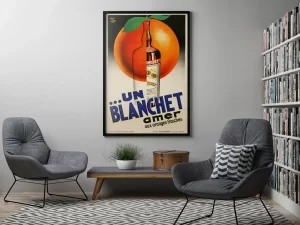Laser welding precision has revolutionized the world of craftsmanship by offering unprecedented levels of accuracy and finesse. With the fusion of laser technology and artistic endeavors, a realm of endless possibilities has been unlocked, allowing artists and craftsmen to push the boundaries of their work.
But what exactly makes laser welding precision so crucial in the world of art and design? And how can this innovative approach enhance artistic expression? In this enlightening discussion, we will delve into the fascinating world of exploring laser welding precision, exploring its importance, artistic potential, and the techniques that enable artists to create stunning pieces.
Join us on a captivating journey through the art of crafting with light.
Key Takeaways
- Laser welding offers unmatched precision and control over heat input and fusion zone, resulting in accurate and reliable welded components.
- Laser welding allows for seamless joining of metal pieces without damaging delicate gemstones or causing discoloration, making it ideal for intricate jewelry design.
- Laser welding enables artists to experiment with different materials, textures, and finishes, opening up possibilities for customized metal artwork and architectural installations.
- Laser welding enhances artistic expression by providing a precise and controlled technique, allowing artists to bring their creative visions to life with intricate and detailed designs.
The Importance of Laser Welding Precision
Laser welding precision plays a crucial role in ensuring the accuracy, reliability, and quality of welded components in various industries. When it comes to joining metal parts together, traditional welding methods often result in imprecise and inconsistent welds. This can lead to structural weaknesses, decreased durability, and compromised performance of the final product.
In contrast, laser welding offers a level of precision that is unmatched by traditional welding techniques. By using a concentrated beam of high-energy light, laser welding allows for precise control of the heat input and the fusion zone. This results in narrow and well-defined welds that exhibit minimal distortion, reduced heat-affected zones, and superior mechanical properties.
The importance of laser welding precision extends beyond just the aesthetic aspect of the final product. In industries such as automotive, aerospace, and medical devices, where safety and reliability are paramount, the quality of welds is of utmost importance. Laser welding precision ensures that the welds meet the stringent requirements for strength, leakage, and fatigue resistance.
Moreover, laser welding precision enables the joining of dissimilar materials, which is often required in modern manufacturing processes. By carefully controlling the laser parameters, it is possible to achieve strong and durable welds between materials with different melting points and thermal properties.
Understanding the Artistic Potential of Laser Welding
Laser welding, with its high precision and accuracy, opens up a world of artistic potential for designers and craftsmen. Here are four ways in which laser welding can be utilized to create stunning and unique works of art:
- Intricate Metal Sculptures: Laser welding allows artists to seamlessly join metal pieces together, enabling the creation of intricate and complex sculptures. The precision of the laser beam ensures that the welds are clean and virtually invisible, giving the sculpture a seamless appearance.
- Fine Jewelry Design: Laser welding is highly valued in the jewelry industry for its ability to join delicate metal components without damaging precious gemstones or causing discoloration. Jewelry designers can incorporate intricate details and textures into their designs, pushing the boundaries of traditional jewelry-making techniques.
- Customized Metal Artwork: Laser welding enables artists to combine different metals and experiment with various textures and finishes. This opens up endless possibilities for creating customized metal artwork, such as wall hangings, decorative panels, and even furniture pieces.
- Architectural Installations: Laser welding can be used to fabricate large-scale metal structures for architectural installations. Its precision and strength make it ideal for creating intricate metal frameworks, providing architects and designers with the freedom to explore innovative and visually striking designs.
Exploring the Versatility of Laser Welding Techniques
The versatility of laser welding techniques allows for a wide range of applications in various industries, showcasing its potential for precise and efficient joining of metal components. Laser welding is a highly versatile technique that offers several advantages over traditional welding methods.
One of the key benefits of laser welding is its ability to weld materials with high precision and accuracy. This makes it ideal for applications that require intricate and complex welding patterns, such as in the production of electronic devices, medical equipment, and automotive components.
In addition to its precision, laser welding also offers the advantage of being a non-contact welding process. Unlike traditional welding methods, which require physical contact between the welding tool and the workpiece, laser welding uses a focused laser beam to melt and join the metal components. This non-contact nature of laser welding eliminates the risk of contamination or damage to the workpiece, making it suitable for welding delicate or sensitive materials.
Furthermore, laser welding can be performed on a variety of materials, including metals, plastics, and even ceramics. This versatility allows for the joining of different types of materials, enabling the creation of hybrid structures that combine the unique properties of each material. This opens up new possibilities for innovation and design in industries such as aerospace, electronics, and jewelry.

Overcoming Challenges in Laser Welding Precision
With the versatility and precision of laser welding techniques, it is crucial to address the challenges that arise in achieving the desired level of welding precision. Laser welding, while offering numerous benefits, presents certain obstacles that must be overcome to ensure optimal results. Here are four key challenges that need to be considered:
- Heat management: Laser welding generates intense heat, which can lead to material distortion and warping. Controlling the heat input is essential to prevent these issues and maintain the structural integrity of the welded components.
- Joint fit-up: Achieving precise joint fit-up is crucial for successful laser welding. Any gaps or misalignments between the components can result in poor weld quality and reduced strength. Careful preparation and alignment of the joint surfaces are necessary to overcome this challenge.
- Material compatibility: Different materials have varying responses to laser welding, making it essential to consider material compatibility. Some materials may exhibit poor weldability or require additional measures, such as using filler materials or preheating, to achieve satisfactory results.
- Process monitoring and control: Laser welding is a complex process that demands continuous monitoring and control to ensure consistent weld quality. Real-time feedback systems, such as monitoring the laser power, beam position, and weld pool dynamics, are necessary to overcome this challenge and maintain precision throughout the welding process.
Enhancing Artistic Expression With Laser Welding
Exploring the possibilities of laser welding opens up a world of artistic expression. Laser welding is a precise and controlled technique that allows artists to create intricate and detailed designs with ease. By harnessing the power of focused light, artists can manipulate metal and other materials to bring their creative visions to life.
One of the main benefits of laser welding for artistic expression is its ability to create clean and precise welds. Traditional welding methods often leave behind visible seams or marks, which can detract from the overall aesthetic of a piece. Laser welding, on the other hand, produces welds that are virtually invisible, allowing artists to seamlessly join different elements together.
Furthermore, laser welding offers artists the ability to work with a wide range of materials. Whether it’s metals like stainless steel, titanium, or gold, or non-metal materials like plastics or ceramics, laser welding provides the flexibility to experiment with different mediums and push the boundaries of traditional artistic techniques.
Additionally, laser welding allows for greater control over the welding process. Artists can adjust the intensity and duration of the laser beam, enabling them to achieve different effects and textures. This level of precision gives artists the freedom to explore new artistic techniques and create unique and captivating pieces.
Frequently Asked Questions
Can Laser Welding Be Used on All Types of Materials?
Laser welding is a versatile technique that can be used on a wide range of materials, including metals, plastics, and ceramics. Its precision and ability to create strong, high-quality welds make it a preferred choice in various industries.
What Is the Difference Between Laser Welding and Traditional Welding Methods?
Laser welding differs from traditional welding methods in several ways. Firstly, laser welding uses a focused laser beam to join materials, resulting in a smaller heat-affected zone and reduced distortion. Additionally, laser welding offers higher precision and can be used on a wider range of materials.
Are There Any Safety Concerns When Using Laser Welding for Artistic Purposes?
When using laser welding for artistic purposes, it is important to address safety concerns. Laser welding can generate intense heat and emit hazardous fumes, so proper ventilation, protective gear, and training are necessary to ensure the well-being of the artist.
Can Laser Welding Be Used for Creating Intricate Designs and Patterns?
Yes, laser welding can be used to create intricate designs and patterns. Its precision and accuracy allow for the manipulation of metal with great detail, making it a valuable tool for artists and craftsmen.
How Does Laser Welding Precision Affect the Overall Quality of the Artwork?
Laser welding precision plays a crucial role in determining the overall quality of artwork. The accuracy and control provided by laser welding allow artists to create intricate designs and patterns with exceptional detail and consistency.
Conclusion
In conclusion, laser welding precision offers a multitude of artistic benefits and possibilities for craftsmen and artists. The precise nature of laser technology allows for intricate and detailed work, pushing the boundaries of artistic expression. By exploring the versatility of laser welding techniques and overcoming challenges, artists can enhance their craftsmanship and create unique and innovative pieces. Laser welding precision opens up a new realm of creative possibilities, allowing artists to craft with light and explore the untapped potential of this innovative approach in the world of art and design.
You May Also Like:

